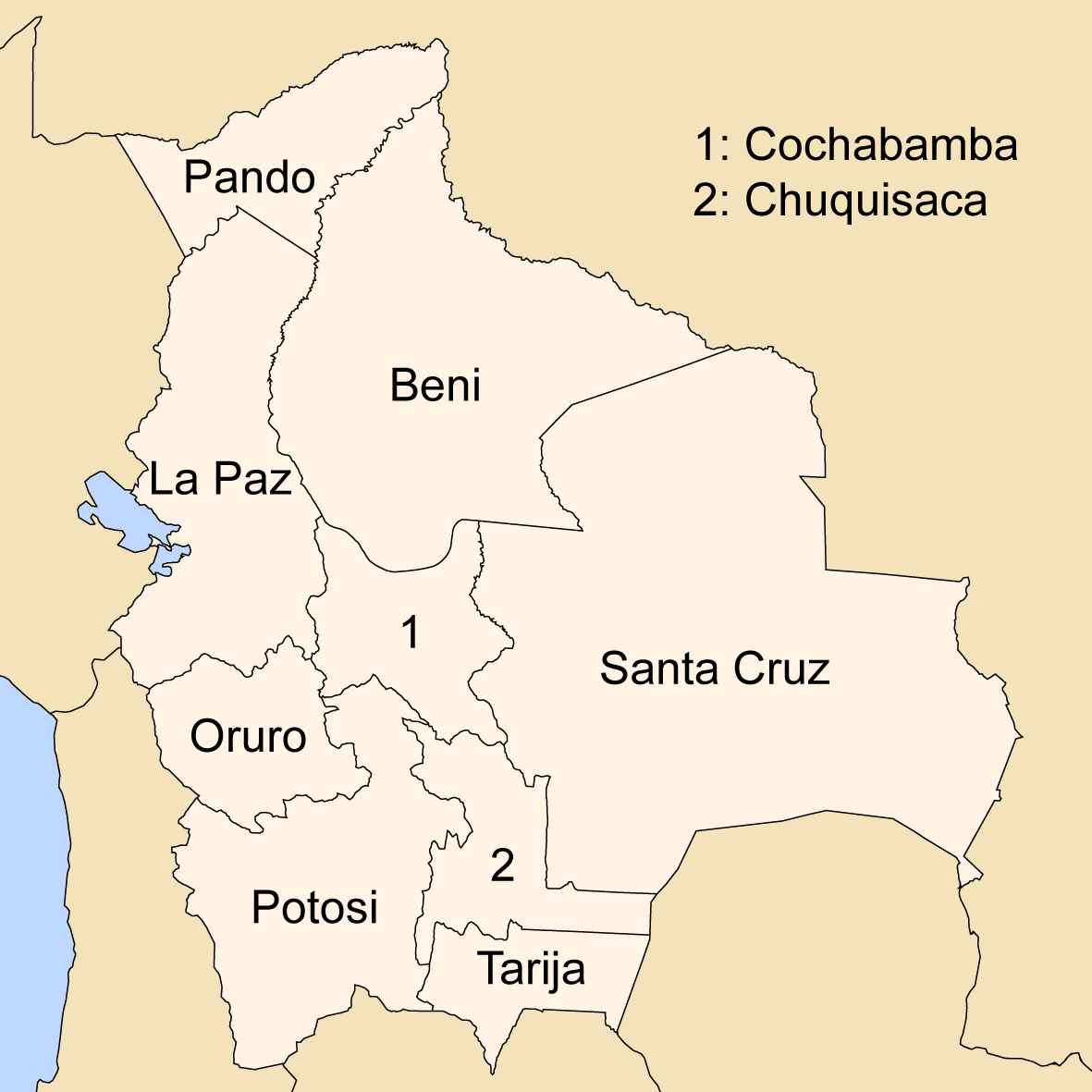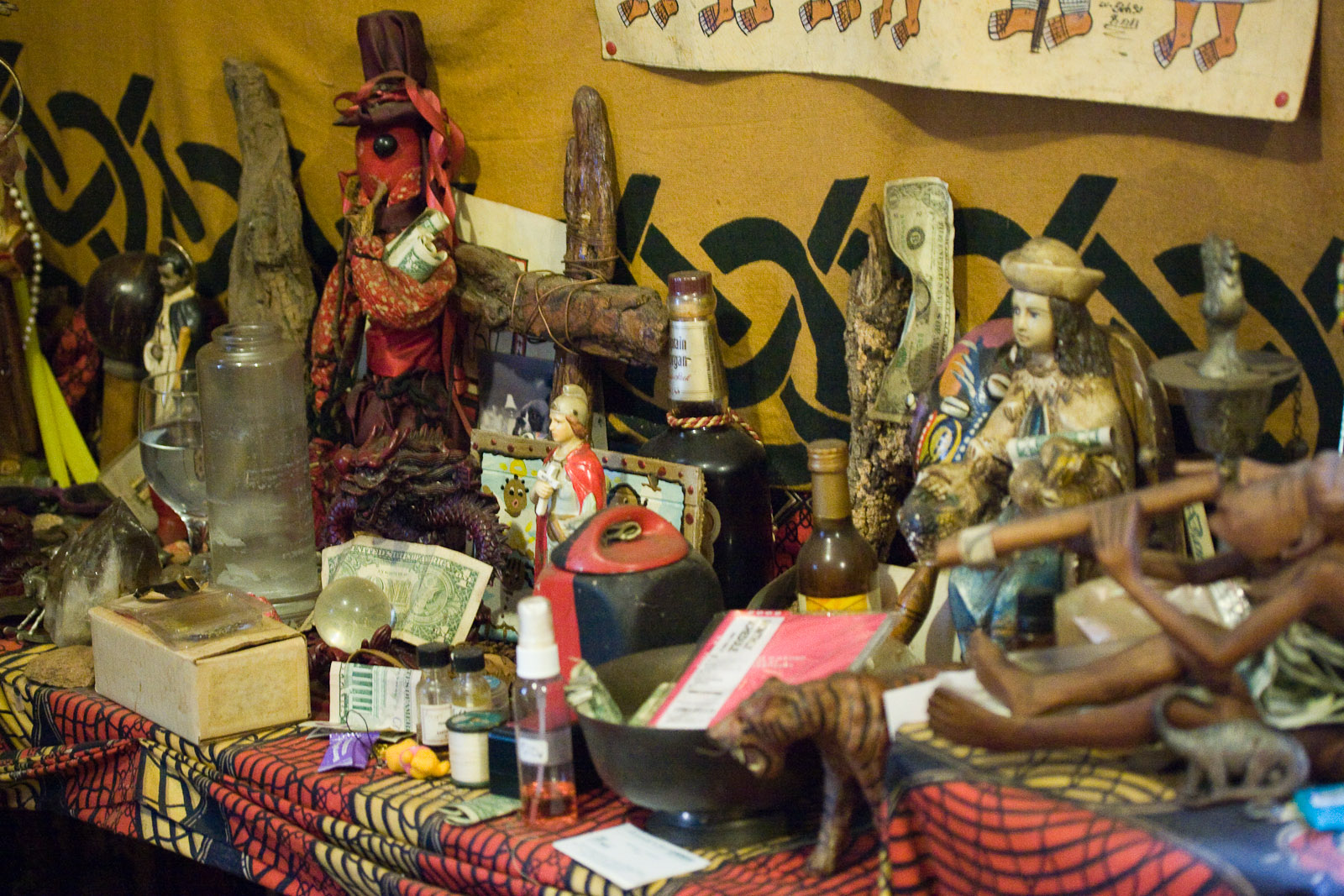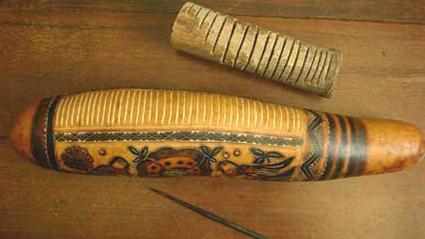|
Mururata (village)
Mururata is a village in the tropical valleys of the Bolivian Yungas. It is a centre of Afro-Bolivian culture and the seat of the ceremonial Afro-Bolivian monarchy. The area was originally populated during the 16th century. Under Spanish colonialism, African slave labour was used in the silver mines from the 17th century onwards. In the 19th century, after the abolition of slavery, freed slaves established the village of Mururata. The majority of the population of Mururata are Catholic and incorporate elements of African diasporic religions, such as rituals in the Macumba and Voodoo religions, in their practice of Christianity. Notable people * Bonifacio Pinedo (1888–1954), King of the Afro-Bolivians from 1932 to 1954 * Aurora Pinedo (1910–1992), Princess Regent of the Afro-Bolivians from 1954 to 1992 * Julio Pinedo '' Don'' Julio Bonifaz Pinedo (born 19 February 1942) is the ceremonial king of the Afro-Bolivian community of the Nor Yungas province, crowned in 1992 ... [...More Info...] [...Related Items...] OR: [Wikipedia] [Google] [Baidu] |
Departments Of Bolivia
Bolivia is a unitary state consisting of nine department (administrative division), departments (). Departments are the primary subdivisions of Bolivia, and possess certain rights under the Constitution of Bolivia. Each department is represented in the Plurinational Legislative Assembly—a bicameralism, bicameral legislature consisting of the Senate and the Chamber of Deputies. Each department is represented by four Senators, while Deputies are awarded to each department in proportion to their total population. Out of the nine departments, La Paz Department (Bolivia), La Paz was originally the most populous, with 2,706,351 inhabitants as of 2012 but the far eastern department of Santa Cruz Department (Bolivia), Santa Cruz has since surpassed it by 2020; Santa Cruz also claims the title as the largest, encompassing . Pando Department, Pando is the least populated, with a population of 110,436. The smallest in area is Tarija Department, Tarija, encompassing . Departments Forme ... [...More Info...] [...Related Items...] OR: [Wikipedia] [Google] [Baidu] |
African Diaspora Religions
African diaspora religions, also described as Afro-American religions, are a number of related beliefs that developed in the Americas in various areas of the Caribbean, Latin America, and the Southern United States. They derive from traditional African religions with some influence from other religious traditions, notably Christianity and Islam.Fulop, Timothy Earl; Albert J. Raboteau, Raboteau, Albert J., eds. (1997). African American Religion: Interpretive Essays in History and Culture'. London; New York: Routledge. . Characteristics Afro-American religions involve ancestor veneration and include a creator deity along with a pantheon (religion), pantheon of divine spirits such as the Orisha, Loa, Vodun, Nkisi, and Alusi, among others. In addition to the religious syncretism of these various African traditions, many also incorporate elements of folk Catholicism including folk saints and other forms of folk religion, Native American religion, Kardecist spiritism, Spiritism, Spirit ... [...More Info...] [...Related Items...] OR: [Wikipedia] [Google] [Baidu] |
Rolando Pinedo Larrea
''Don (honorific), Don'' Rolando Julio Pinedo y Larrea, Crown Prince of the Afro-Bolivians (born 30 July 1994) is a Bolivian lawyer and a member of the Afro-Bolivian monarchy, Afro-Bolivian royal family. As the nephew, and adopted son, of King Julio Pinedo, Julio I, he is the current heir to the Afro-Bolivian throne. He serves as the Grand Chancellor of Africa of the Afro-Bolivian monarchy#Order of Merit, Royal Order of Merit of Prince Uchicho. Early life and education Rolando was born on 30 July 1994 in the village of Mururata (village), Mururata in the Nor Yungas Province of La Paz Department (Bolivia), La Paz, Bolivia. He is the nephew and adopted son, and heir, of King Julio Pinedo, Julio I and Queen Angélica Larrea. He attended university in La Paz, Bolivia, La Paz from 2012 to 2014, studying humanities and international business. In 2021, he began law school at the University of the Andes (Bolivia), Universidad de Los Andes in La Paz. Career Rolando worked as an admi ... [...More Info...] [...Related Items...] OR: [Wikipedia] [Google] [Baidu] |
Angélica Larrea
''Doña'' Angélica Larrea de Pinedo (born 1944) is the Ceremonial Queen of the Afro-Bolivians, as the wife of Ceremonial King Julio Pinedo. She twice served as the mayor of Mururata. Biography Larrea was born in 1944 in Santa Ana del Yacuma. She married Julio Pinedo in 1976. Her husband succeeded his grandfather, Bonifacio Pinedo, as Ceremonial King of the Afro-Bolivians in 1992. Their ceremonial coronation took place in a Catholic service on 18 April 1992. King Bonifacio died in 1954, and between his death and her husband's succession, her mother-in-law Doña Aurora led the community. Pinedo and Larrea's official coronation ceremony, held by the government in La Paz, took place on 3 December 2007. The couple, who have no biological children, adopted their nephew and heir, Prince Ronaldo. Larrea and her husband are Catholic. Larrea and her family live on their farm in Mururata, Nor Yungas Province. She runs a small shop that sells grocery items and co-manages the fa ... [...More Info...] [...Related Items...] OR: [Wikipedia] [Google] [Baidu] |
Aurora Pinedo
''Doña'' Aurora Pinedo (1910 – 18 April 1992) was the Princess Regent of the Afro-Bolivians from 1954 to 1992. As her father, Bonifacio I, had no male heirs, she succeeded him as princess regent following his death in 1954. Biography Doña Aurora Pinedo was born in 1910 in Mururata to Don Bonifacio Pinedo and his second wife, Doña Cecilia Barra. She was a princess of the Afro-Bolivian Royal House Afro-Bolivians (), also known as Black Bolivians (), are Bolivians who have predominantly or total Sub-Saharan African ancestry and therefore the descriptive "Afro-Bolivian" may refer to historical or cultural elements in Bolivia thought to eman ... as the eldest daughter of Bonifacio, who reigned as ceremonial King of the Afro-Bolivians. Following the death of her father in 1954, who had no direct male heirs, she assumed the role of Princess Regent of the Afro-Bolivians, taking on the responsibilities of the ceremonial monarch. She reigned as regent for thirty-eight yea ... [...More Info...] [...Related Items...] OR: [Wikipedia] [Google] [Baidu] |
Bonifacio Pinedo
'' Don'' Bonifacio Pinedo (1888 – 1954) was the King of the Afro-Bolivians from 1932 to 1954. As the ceremonial king, he presided over religious festivities celebrating Saint Benedict the Moor and was responsible for matchmaking in the Afro-Bolivian community. His role was suppressed during the Bolivian National Revolution. Early life and ancestry Pinedo was born in 1888 in the Nor Yungas Province to José María Pinedo and Gregoria Iriondo. He had a brother, Cipriano. Pinedo was the grandson of Andrés Pinedo and Antonia Zavala. He is a descendant of a noble African tribe that resided in the Congo at a time before France and Belgium colonized the region. His ancestor, Uchicho, Prince Uchicho of either the Kingdom of Kongo or Senegal, was captured and enslaved by the Spanish, who brought him to Bolivia in 1820 to work on an ''hacienda''. In 1832, Prince Uchicho was crowned by the former slavery in Bolivia, slaves as the first King of the Afro-Bolivians. The family adopted t ... [...More Info...] [...Related Items...] OR: [Wikipedia] [Google] [Baidu] |
West African Vodun
West is one of the four cardinal directions or points of the compass. It is the opposite direction from east and is the direction in which the Sun sets on the Earth. Etymology The word "west" is a Germanic word passed into some Romance languages (''ouest'' in French, ''oest'' in Catalan, ''ovest'' in Italian, ''vest'' in Romanian, ''oeste'' in Spanish and Portuguese). As in other languages, the word formation stems from the fact that west is the direction of the setting sun in the evening: 'west' derives from the Indo-European root ''*wes'' reduced from ''*wes-pero'' 'evening, night', cognate with Ancient Greek ἕσπερος hesperos 'evening; evening star; western' and Latin vesper 'evening; west'. Examples of the same formation in other languages include Latin occidens 'west' from occidō 'to go down, to set' and Hebrew מַעֲרָב (maarav) 'west' from עֶרֶב (erev) 'evening'. West is sometimes abbreviated as W. Navigation To go west using a compass for navigati ... [...More Info...] [...Related Items...] OR: [Wikipedia] [Google] [Baidu] |
Macumba
''Macumba'' () is a generic term for various Afro-Brazilian religions, the practitioners of which are then called ''macumbeiros''. These terms are generally regarded as having negative connotations, comparable to an English term like "black magic". In a broader sense, the term ''Macumba'' is used for most Afro-Brazilian religious traditions, including Candomblé and Umbanda. In a more limited sense, ''macumba'' is used only to characterize traditions like Quimbanda that revolve around the lesser '' exu'' spirits, especially as they are practiced in Rio de Janeiro. Some practitioners of Afro-Brazilian traditions call themselves ''macumbeiros'', although in some instances this is done predominantly in jest. Etymology There are debates regarding the etymological origins of the term ''Macumba'' and the matter remains unsettled. Some scholars have argued that ''Macumba'' derives from a Bantu language term for a type of percussion instrument. If so, the use of such instruments in t ... [...More Info...] [...Related Items...] OR: [Wikipedia] [Google] [Baidu] |
Catholic Church
The Catholic Church (), also known as the Roman Catholic Church, is the List of Christian denominations by number of members, largest Christian church, with 1.27 to 1.41 billion baptized Catholics Catholic Church by country, worldwide as of 2025. It is among the world's oldest and largest international institutions and has played a prominent role in the history and development of Western civilization.Gerald O'Collins, O'Collins, p. v (preface). The church consists of 24 Catholic particular churches and liturgical rites#Churches, ''sui iuris'' (autonomous) churches, including the Latin Church and 23 Eastern Catholic Churches, which comprise almost 3,500 dioceses and Eparchy, eparchies List of Catholic dioceses (structured view), around the world, each overseen by one or more Bishops in the Catholic Church, bishops. The pope, who is the bishop of Rome, is the Papal supremacy, chief pastor of the church. The core beliefs of Catholicism are found in the Nicene Creed. The ... [...More Info...] [...Related Items...] OR: [Wikipedia] [Google] [Baidu] |
La Paz Department (Bolivia)
The La Paz Department of Bolivia comprises with a 2024 census population of 3,022,566 inhabitants. It is situated at the western border of Bolivia, sharing Lake Titicaca with the neighboring Peru. It contains the Cordillera Real mountain range, which reaches altitudes of . Northeast of the Cordillera Real are the '' Yungas'', the steep eastern slopes of the Andes Mountains that make the transition to the Amazon River basin to the northeast. The capital of the department is the city of La Paz and is the administrative city and seat of government/national capital of Bolivia. Provinces The Department of La Paz is divided into 20 provinces (''provincias'') which are further subdivided into 85 municipalities (''municipios'') and - on the fourth level - into cantons. The provinces with their capitals are: Government The chief executive office of Bolivia's departments (since May 2010) is the Governor; before then, the office was called the Prefect, and until 2006 the prefec ... [...More Info...] [...Related Items...] OR: [Wikipedia] [Google] [Baidu] |
Afro-Bolivian
Afro-Bolivians (), also known as Black Bolivians (), are Bolivians who have predominantly or total Sub-Saharan African ancestry and therefore the descriptive "Afro-Bolivian" may refer to historical or cultural elements in Bolivia thought to emanate from their community. It can also refer to the combining of African and other cultural elements found in Bolivian society such as religion, music, language, the arts, and class culture. The Afro-Bolivians are recognized as one of the constituent ethnic groups of Bolivia by the country's government, and are ceremonially led by a king who traces his descent back to a line of monarchs that reigned in Africa during the medieval period. They numbered 23,000 according to the 2012 census. History of slavery in Bolivia Slaves were brought as early as the 16th century in Bolivia to work in mines. In Potosí during the 17th century 30,000 Africans were brought to work in the mines from which the total population of Potosí which numbered aro ... [...More Info...] [...Related Items...] OR: [Wikipedia] [Google] [Baidu] |
Bolivian Yungas
The Bolivian Yungas is a tropical and subtropical moist broadleaf forest ecoregion in the Yungas of central Bolivia. Setting The ecoregion occurs in elevations ranging from on the eastern slopes of the Andes in Bolivia, extending into a small portion of southeastern Peru. It forms a transition zone between the Southwest Amazon moist forests to the northeast and the Central Andean puna and wet puna to the southwest. Climate The climate in this ecoregion varies from tropical rainforest to tropical monsoon. Fog and rain deposited by northern trade winds contribute to the high humidity and precipitation of the Yungas. Flora Epiphytes are abundant and include bromeliads, orchids, and tree-ferns ('' Cyathea''). '' Chusquea'' bamboo is an indicator species of the ecoregion. Fauna Mammals found in this ecoregion include the spectacled bear (''Tremarctos ornatus''), Geoffroy's cat (''Leopardus geoffroyi''), lowland tapir (''Tapirus terrestris''), jaguar (''Panthera onca''), ja ... [...More Info...] [...Related Items...] OR: [Wikipedia] [Google] [Baidu] |





